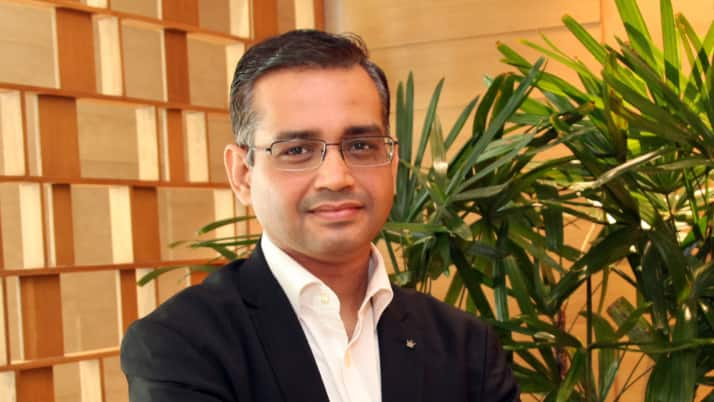With its ‘Bring Home the Smart’ campaign, Schneider Electric aims to redefine home electricals as lifestyle, safety, and design enablers—making smart, sustainable living accessible to Indian households.

Rajat Abbi, Vice President – Marketing, Schneider Electric, Greater India (Source: prhandout)
India’s Rs 25,000-crore home electricals market has long been seen as a “commodity play”—switches, fittings, and wires treated as basic utilities rather than lifestyle choices. But with rising disposable incomes, urbanisation, and the aspirational wave sweeping Tier 2 and Tier 3 towns, that perception is shifting fast. Consumers are no longer content with mere functionality; they want safety, style, and smart features that align with modern living.
Sitting at the intersection of this change is Schneider Electric, which is pushing hard to reposition home electricals from back-end essentials to front-line lifestyle enablers. Its latest campaign, “Bring Home the Smart”, showcases innovations like Miluz Zeta switches with built-in AQI monitors, motion-sensing foot lamps, and the Wiser 2.0 Smart Home Automation system. The pitch is simple yet disruptive: smart living doesn’t have to be costly, complicated, or confined to metros.
In this conversation, Rajat Abbi, Vice President – Marketing, Schneider Electric, Greater India, explains the blind spots the campaign is addressing, how the brand is balancing affordability with aspiration, and why electricians and small-town influencers are at the centre of its market expansion strategy.
What’s the biggest blind spot in India’s home electrical market that this campaign is trying to expose or fix, and why hasn’t anyone else tackled it effectively?
Most Indian homeowners still perceive electrical fittings as basic utilities, overlooking their potential as lifestyle and safety enablers. Traditionally, the market has given less attention to design, user convenience, or the evolving role of electrical products in modern, connected living spaces. This campaign sets out to correct that consumer blind spot by positioning switches and electrical devices—not as functional afterthoughts, but as key contributors to a smarter, safer, and more elegant, connected home experience. It challenges the long-held belief that smart home automation and aesthetically appealing switches cannot be market competitive and are complex to manage.
Through innovative products like Miluz Zeta switches, which come with an in-built Air Quality Indicator (AQI), we’re making sleek, design-led options accessible—disrupting the notion that stylish electrical products are not meant for all. Motion-sensing foot lamps emphasise the need to focus on energy efficiency and safety, two aspects that are often overlooked in Indian households despite their long-term value. Meanwhile, Wiser Smart Home Automation addresses another misconception—that home automation is complex and costly—by offering a scalable, intuitive system that brings smart living within reach of Indian homes. In doing so, the campaign repositions home electrical products as essential lifestyle and safety enablers.
How does Schneider Electric balance the need for advanced “smart” tech with affordability in markets where price sensitivity is brutal?
At Schneider Electric, we believe that smart living should be accessible to everyone. That’s why our focus has always been on delivering meaningful innovations that are both technologically advanced and competitive. Our latest offerings, like the Wiser 2.0 Smart home automation, Miluz Zeta switches with built-in air quality indicators, and motion-sensing LED foot lamps, are tailored to meet the unique needs of Indian homes. These products combine style, safety, energy efficiency, and intuitive functionality without compromising the need to deliver superior value at competitive pricing. Whether it’s a metro city or a smaller town, today’s consumers are aspirational yet value-conscious, and we aim to empower them with solutions that enhance their everyday living while delivering superior value and differentiation.
What hard data or consumer behaviour insights forced you to rethink your product or campaign approach for this launch?
Our approach was strongly supported by the fact that smart and connected electrical solutions have a very small penetration in India. But the demand for such solutions is growing fast, thanks to India’s growing population, fastest-growing economy and higher disposable income. Recognising this, we have curated the ‘Bring Home the Smart’ campaign that aims at showcasing the unique innovations Schneider Electric is bringing to the Indian home electricals market while addressing the diverse needs and aspirations of Indian consumers. Market projections show that India’s residential electrical segment will see strong double-digit growth for the next several decades, driven by rising disposable incomes, rapid urbanisation, and a surging appetite for smarter, future-ready homes.
We see a growing trend where homeowners seek more than just functionality from their home electrical solutions. They’re looking for solutions that reflect their style, offer modern aesthetics, deliver convenience, and most importantly, enhance safety. Yet, these are areas that have traditionally remained undercommunicated in the electrical products category. It became clear that our communication strategy had to effectively communicate how life can become smarter and better for homeowners with our electrical solutions. These findings led to a campaign approach- position the products not as technical or functional utilities but as lifestyle enablers that elevate day-to-day living.
This led us to showcase our latest innovations like Miluz Zeta switches, Motion-sensing foot lamps, and Wiser Smart Home Automation—as solutions that fuse affordability, elegance, and future-ready tech. The ‘Bring home the smart’ campaign was crafted to educate, inspire, and emotionally connect with homeowners, demystifying smart tech and showcasing how seamlessly these innovations fit into the modern Indian home. By addressing these evolving consumer expectations head-on, Schneider Electric aims to lead the shift towards a smarter, safer, and more intuitive living experience in Indian households.
India’s smaller towns and rural areas have different priorities and buying habits. What’s your real plan to break through there, beyond just expanding retail presence?
Schneider Electric’s strategy goes far beyond expanding retail footprints. It is rooted in localisation, education, and ecosystem development—three critical pillars to truly penetrate and win in these markets. Our on-ground strategy hinges on a direct engagement model that strengthens channel partnerships, introduces differentiated and consumer-relevant products, and invests significantly in brand-building and awareness creation.
One of the most powerful levers in smaller towns is the network of local influencers—electricians, contractors, and retailers—who play a decisive role in shaping buying decisions. We’re empowering them through targeted training and certification programs, helping build product trust and familiarity where it matters most. Complementing this is our high-decibel integrated campaign— ‘Bring Home the Smart’. The campaign runs in multiple regional languages across various platforms, including Digital, TV and Outdoor, ensuring cultural relevance and deep emotional resonance.
By combining global innovation with local relevance, we are building a trusted presence that transcends geography and socio-economic tiers, cementing our role not just as a product provider but as a partner in the modernisation of Indian homes.
Sustainability sounds great, but how do you deal with the trade-offs when eco-friendly products might cost more or complicate installation for typical Indian households?
At Schneider Electric, we don’t see sustainability as a compromise—it’s an enabler for better living. Our goal is to design eco-friendly products that are desirable, accessible, and easy to adopt, even in markets where cost and convenience are paramount. That’s why our ‘Made in India, for India’ approach is critical. It ensures our products align with local expectations around price competitiveness and ease the on-the-go installation.
Offerings like the Miluz Zeta switches, motion-sensing foot lamps, and Wiser Smart Home Automation are engineered to provide differentiated and enhanced value to customers. They enable households to save significantly on energy bills, have lower maintenance needs, and extended product lifespans. To further reduce barriers, our products are retrofit-friendly, meaning consumers can upgrade their homes without major disruptions or additional infrastructure changes.
We believe that eco-friendly innovation should simplify life, not add complexity. By combining intuitive technology with market competitiveness and user-friendliness, we’re making sustainable choices practical and rewarding for every Indian household—whether big or small.
What metrics or signals will tell you this campaign moved the needle, beyond clicks and eyeballs? Are consumers changing how they use or buy home electrical products?
We will focus on measuring the impact of this campaign on all the metrics, whether brand or business. For us, success goes far beyond reach and impressions. Deepak's engagement is critical. Therefore, this is an integrated campaign where we will use ATL, BTL, Digital and Outdoor platforms to reach our target audience and engage them. Focus will be on connecting with our target audience and key stakeholders through the right touchpoints. Also, a key watchout will be if consumers and stakeholders start perceiving switches and home automation not only as necessary functional products but as enablers of a better, safer, and more connected and intuitive lifestyle. In that sense, our ambition is to redefine the category, not just grow within it.
By continuing you agree to our Privacy Policy & Terms & Conditions
